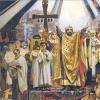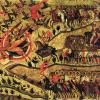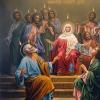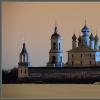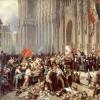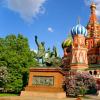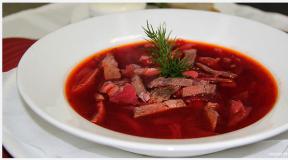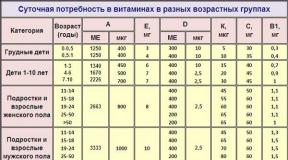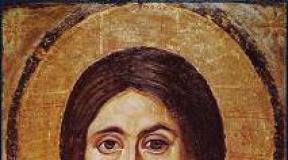1571 raid devlet girey. Versions: Ivan the Terrible and Khan Giray, in search of a secret seal. Crimean king dog
On June 3, 1571, during the Great Crimean raid on Russian lands, the army of Khan Devlet Giray broke through to Moscow. The Tatars plundered and burned the capital of the Moscow kingdom, which burned out almost completely, only the Kremlin survived. Taking a lot of booty and a great full, the khan returned to the Crimea.
In the spring of 1571, Devlet Giray gathered a large army for a campaign against Russia. The number of Tatar armies of that time could only be indicated approximately, since the detachments of the steppes did not differ in special discipline and could at any time join the main horde or leave it. According to various estimates, from 60 to 120 thousand participated in this campaign, although the last figure indicated in the annals is considered exaggerated by historians.
The moment for the campaign was chosen very well - the main forces of the Russian kingdom at that moment were connected by the Livonian War. As a result, the "coastal governors" on the Oka had at their disposal no more than 6 thousand warriors.
Initially, the Crimean Khan was not at all going to go to Moscow, intending to limit himself to a raid on the Kozelsk places for robbery and capturing full. However, having received reports from defectors about the small number of Russian troops, Devlet-Girey changed his plans. His army bypassed the Serpukhov fortifications near the Oka from the west and, having crossed the Ugra, entered the flank of the small Russian border troops. After the defeat of the Russian avant-garde, the Tatars rushed to Moscow, threatening to cut off the retreat to the north for the small Russian troops. Not having the strength to stop the advance of the enemy, the governors retreated to the capital, where the surrounding population also fled. Meanwhile, Tsar Ivan IV himself left for Rostov.
Moving quickly, the khan approached Moscow on the shoulders of the retreating governors, ruining the camp near Kolomenskoye, which they had abandoned in a hurry. On June 3, 1571, Crimean detachments ravaged unprotected settlements and villages around Moscow, after which they set fire to the suburbs of the capital. Due to the strong wind, the fire quickly spread throughout the city. Driven by fire, the townspeople and refugees rushed to the northern gates of the capital. A crush arose in the gates and narrow streets, people "walked in three rows over each other's heads, and the upper ones crushed those who were under them."
The zemstvo army, instead of giving battle to the Tatars in the field or on the outskirts of the city, began to leave for the center of Moscow and, having mixed with the refugees, lost order; Governor Prince Belsky died during a fire, suffocating in the cellar of his house. Within three hours, Moscow burned to the ground. The fire was so strong that even the Tatars themselves were prevented from robbing in the suburbs.
The regiment of the voivode Mikhail Vorotynsky, who settled in the Kremlin, managed to repel all the Tatar attacks, and the khan did not dare to besiege the stone fortress, having heard about the approach of a large Russian army. The next day, the Tatars and Nogais with huge booty went along the Ryazan road to the steppe.
The number of dead and captured historians find it difficult to determine exactly: the numbers are from 60 to 150 thousand taken into slavery and from 10 to 80 thousand who died during the attack of the Tatars on Moscow. The terrible ruin of Moscow is evidenced by the papal legate Possevino, who in 1580 numbered no more than 30 thousand people, although back in 1520 there were 41,500 houses and at least 100 thousand inhabitants in Moscow.
Having won such an impressive victory, Devlet-Giray demanded that the Russian tsar give up Astrakhan and Kazan, threatening otherwise with a new campaign. Stunned by the defeat, Ivan the Terrible replied in a reply message that he agreed to transfer Astrakhan under Crimean control, but Kazan refused to return Gireyam. Confident in his military superiority, the khan did not make this “half-hearted” decision, which ultimately saved the Russian state from territorial losses.
Inspired by his success, Devlet Giray put forward a plan for the complete defeat and subjugation of the Russian state, which was supported by the Ottoman administration in Istanbul. And the very next year, a huge 100,000-strong Crimean-Turkish army again moved to Moscow. However, this time he was in for a stunning rout in the Battle of Molodi from the 25,000-strong Russian army under the command of voivode Mikhail Vorotynsky. This defeat nullified all the previous successes of the Crimean Khan.
Interest in the history of the peoples inhabiting the shores of the Black Sea, in their way of life and traditional clothing is now very great. In Turkey, ancient paintings, including book miniatures, are reliable sources of material for historical research.
It is difficult to overestimate the importance of the gallery of portraits of the Ottoman Padishahs in the Topkapı Palace Museum in Istanbul, although, strictly speaking, not all of them are truly portrait images.
 There is no gallery that captures the khans of the Crimea; and yet the Crimean Khanate, which existed from the middle of the 15th century. to 1783, at first as an independent state, then as a vassal of the Ottoman Empire, it left a noticeable mark both in the history of the Turkish state and in Ottoman art.
There is no gallery that captures the khans of the Crimea; and yet the Crimean Khanate, which existed from the middle of the 15th century. to 1783, at first as an independent state, then as a vassal of the Ottoman Empire, it left a noticeable mark both in the history of the Turkish state and in Ottoman art.
Almost the first image of the Crimean Khan in the Ottoman illustrated book is the miniature "Bayazid II receives Mengli Giray in the Shah's tent during the campaign against Moldavia in 1484." from "Hyuner-name" by Seyyid Lokman, a book kept in Topkapi.
Mengli-Girey ibn Khadzhi-Girey - one of the most famous Crimean khans, the son of the founder of the khanate, an ally of the Moscow prince Ivan III, and then his son Vasily. Three times, with interruptions, he occupied the Crimean throne: in 1466-1467, 1469-1474 and 1478-1515.
It was during his reign that Crimea began to become dependent on the Turks: after 1475, when the Ottomans conquered the Genoese Kafa (modern Feodosia), the southern coastline of the peninsula began to belong to the Port, and the khans, who owned the rest of the territory, turned into vassals of the Sultan, obliged to accept participation in his military enterprises.
On May 1, 1484, Bayezid II set out on a campaign against Moldavia and already on July 15 captured Chilia. On July 24, Ottoman troops besieged Akkerman on the Dniester, which was taken on August 3 with the help of fifty thousand Crimean troops. The miniature shows Bayazid dressed in a green caftan trimmed with white fur. Similar robes of the Sultan have been preserved in museum collections.
Sitting on a low chair, Mengli Giray is dressed in a dark blue robe, embroidered with gold and girded with a red sash, and in a red caftan. On the head is a low Tatar hat trimmed with fur. Among the Crimean Tatars, this hat survived unchanged until the 19th century.
Both rulers are wearing red leather boots - by the way, museums have similar leather boots of chisme from the second half of the 16th century. Mengli-Girey has a mustache, a wide full beard, thin eyebrows, slightly slanting eyes. There is another Crimean on the miniature, behind Mengli. This is probably the brother of the khan and his kalga - the heir to the throne - Yamgurchi.
He was the right hand of Mengli until the son of the khan, Mohammed Giray, grew up and became a kalga. Yamgurchi is wearing a blue caftan, put on a pink robe embroidered with gold, and almost the same hat as his brother. The facial features of the brothers are very, very similar.
As part of "Suleiman-name" - an illustrated biography of the Ottoman Sultan Suleiman Kanuni "The Legislator", nicknamed the Magnificent in Europe, the image of the grandson of Mengli-Girey, Devlet-Girey (1551-1577) - the destroyer of Russia, who burned in May 1571 Moscow, the khan from whom Ivan the Terrible fled in fear. The miniature depicts the reception by Sultan Suleiman in 1551 of Devlet Giray, who had just ascended the Crimean throne.
The action takes place in the chamber of the Topkapi Palace on the other side of the Bab-us-Saadet gate - "Holy of Holies". Suleiman, seated on a hexagonal throne, extends his hand to the Khan for a kiss.
 Devlet Giray is wearing a traditional Crimean high white hat with a fur trim and a black caftan. The caftan is decorated with a Chinese origin cintemani pattern, extremely popular at the Ottoman court in the 16th century.
Devlet Giray is wearing a traditional Crimean high white hat with a fur trim and a black caftan. The caftan is decorated with a Chinese origin cintemani pattern, extremely popular at the Ottoman court in the 16th century.
A series of double wavy lines and the composition of their three circles symbolize the strength and power of the tiger and leopard inherent in the khan.
The Khan is also wearing a robe, possibly a gift from the Sultan. A robe presented as a gift or sent along with a drum and a banner is a sign of the approval of the Crimean ruler by the padishah on the throne.
As a rule, the khans were given a caftan called kapaniche: covered on top with exquisite and expensive fabric, for example, satin, and lined with fur on the inside, it had long sleeves, wrapped in front and fastened with buttons decorated with precious stones.
Here is how P. A. Levashov, who was in the diplomatic service in Istanbul in the late 60s and early 70s, writes about this. XVIII century: "Kerim-Girey, the Tatar Khan, who was in exile on the island of Cyprus, arrived on October 17 in Constantinople ... excellent honors were rendered to him and great gifts were given, such as: a pen strewn with diamonds and called sorghum, which themselves sultans wear on their turbans, also a dagger with a shank adorned with various precious stones, a high-working watch with diamonds and several bags of money for the crew; in addition, he was wearing a fur coat called a boar, which is given only to princes of the blood or viziers for extraordinary merit " .
Devlet-Giray's miniature shows a rather rare drooping mustache. There is no doubt that the artist conveyed the true image of the ruler, well known to him. Next to the khan are four viziers of Suleiman and two bodyguard servants.
The entrances to the reception room and adjacent rooms are guarded. The lower register of the miniature (outside the chamber) depicts a group of Crimeans in hats with forked brim (traditional Tatar headdresses) - Devlet Giray's retinue. Amazed by the luxury of the Ottoman court, the Tatars gesticulate and exchange impressions.
Thanks to the work of Ottoman miniaturists, we have the opportunity to find out what the sons of Devlet Giray looked like. The first to rule after the death of his father was his son Mohammed Giray II, nicknamed Semiz for his obesity, i.e. "Fat" (1577-1584).
A miniature depicting Muhammad Giray is included in another biography of Sultan Suleiman; The author of the book was Lokman bin Husayn al-Ashuri. A copy of this work, completed in AH 987 (1579), is now kept in Dublin, in the Chester Beatty Library.
 The illustration depicts the crossing of the Danube by Ottoman and Crimean troops in 1566 during the campaign against the Hungarians. Turkish soldiers are depicted at the top of the composition, Crimean Tatars at the bottom. The drawing is accompanied by poetic lines.
The illustration depicts the crossing of the Danube by Ottoman and Crimean troops in 1566 during the campaign against the Hungarians. Turkish soldiers are depicted at the top of the composition, Crimean Tatars at the bottom. The drawing is accompanied by poetic lines.
Judging by the miniature, Mohammed Giray does not justify his nickname at all. However, let's not forget that he will take the throne of his fathers only after a long 11 years, which, together with the subsequent years of reign, will make such a sad change in his appearance. By 1583, Mohammed Giray had already become so obese that he was unable to sit in the saddle and moved in a cart drawn by six or eight horses.
The practice of involving the Crimean Tatars by the Ottoman padishahs in military operations in Europe was first tested by Bayezid II. Since then, the padishahs often used the assistance of the khans, the Tatars began to actively participate in the military operations of the Ottomans. An episode of one of these campaigns is depicted in a miniature recreating the events of the time when the Turkish army made an expedition to punish Petru Raresh, the governor of "Kara-Bogdania", as the Ottomans called Moldova.
The campaign began with the solemn departure of the Sultan from Istanbul on July 8, 1538. According to Lutfi Pasha, the vizier Suleiman Kanuni, from Adrianople (Edirne), where Suleiman arrived on July 18, a Sultan's firman was sent to Khan Sahib Giray, in which the following was prescribed: "And you also come ready for war against Kara-Bogdania."
Ottoman and Crimean troops met in early September on the plain near the city of Yassy very solemnly, as shown in the figure. The miniature in the upper register shows the Tatar army under the command of Sahib Giray.
 The Crimean warriors have pointed hats-helmets with sultans, spears with triangular flags on the shafts. These are elite units; simple warriors wore pointed felt caps.
The Crimean warriors have pointed hats-helmets with sultans, spears with triangular flags on the shafts. These are elite units; simple warriors wore pointed felt caps.
Michalon Litvin, a 16th-century Lithuanian author who visited the Crimea on an embassy mission, described the clothes and headdress of the Crimeans as follows: “The Tatars have long tunics without folds or gathers, comfortable, easy for riding and fighting; their white pointed felt hats are not made for beauty; their height and brilliance give the crowds [of the Tatars] a formidable appearance and intimidate enemies, although almost none of them wear helmets.
This evidence is fully confirmed, for example, by the image of a Lithuanian Tatar in a soft, most likely just a felt cap on a Polish copy of a French drawing.
At a meeting near Iasi, the Ottoman troops lined up in parade fired three volleys of rifles and cannons, which were supposed to stun the Tatars, until then, according to the Ottoman chroniclers, who had not heard such a monstrous thunder.
Sultan Suleiman received the greeting of the khan and his entourage, sitting on a horse. On the same day, Sahib Giray with his retinue was introduced to the Sultan, awarded the kiss of his hand and generously gifted. At the end of the celebrations, a rich feast was held. After a victorious campaign showered with favors Sahib Giray in October 1538 was released to the Crimea.
Let us now return to Mohammed Giray, whose obesity became one of the reasons - although not the main one - of the protracted crisis on the peninsula, the death of several of his relatives, the war with the Ottomans and, ultimately, his own death. But first things first. In 1583 Mohammed Giray refused to personally participate in the Persian campaign of Sultan Murad III (1574-1595).
It is difficult to say what was more in Semiz's refusal to fulfill the overlord's command: unwillingness to endure the hardships of war, hopes for liberation from vassalage, or fear for one's life. So, at the head of the Crimean army, the khan put his brother and heir Adil Giray. The militant and loving Adil-Giray did not return from the campaign.
His tragic fate formed the basis of the Crimean poem "Adil-Sultan". The hero of the poem, Adil, is sent by the Ottoman sultan along with an army through the Caucasus against the Persian Shah. The campaign ended in failure, and Adil himself was captured.
In captivity, he behaved extremely frivolously and started a love affair with the ladies from the Shah's harem, for which, as expected, he was killed. Much later, this plot inspired the outstanding Turkish writer Namyk Kemal to write the novel "Jezmi", which, however, remained unfinished.
Adil Giray
Of course, a romantic character and a real person are not the same thing. However, episodes from the life of the epic hero-lover have much in common with the adventures of the real Adil Giray. (see big picture)
In a miniature from Asafi Pasha's "Shuja't-name" (1586) - an epic poem in Turkish - Adil and his beloved, a captive princess from the Safavid dynasty, are sitting on a carpet in a richly decorated tent, in front of them are fruits, snacks and drinks.
The servant serves food, and near the tent one can see gyrfalconers and falconers, who are responsible for the Khan's favorite pastime - hunting with birds of prey.
The same Adil is depicted on the Ottoman miniature from the "Shahinshah-name" known to us by Lokman bin Husayn al-Ashuri - an epic poem in Farsi dedicated to Sultan Murad III.
 A copy of this work dated AH 989 (1581) is kept in Istanbul. The miniaturist presented a tragic moment - the execution of Adil in Shamakhi. Adil-Girey is kneeling in a simple belted robe, next to him is a Persian executioner, chopping off the head of the offspring of the Crimean dynasty.
A copy of this work dated AH 989 (1581) is kept in Istanbul. The miniaturist presented a tragic moment - the execution of Adil in Shamakhi. Adil-Girey is kneeling in a simple belted robe, next to him is a Persian executioner, chopping off the head of the offspring of the Crimean dynasty.
Meanwhile, while Adil Giray was busy with war and love, the angry Porte sent a firman to the khan with the order to immediately come to the aid of the Ottoman troops.
A descendant of Genghis Khan allegedly answered: “Well, are we Ottoman beys?”, believing that his title does not give the padishah the right to address him with orders, as to a simple bey (prince). Murad III, however, did not forgive the disobedient.
It fell to the hero of the Persian campaign, commander Osman Pasha Ozdemir-oglu, to punish the arrogant fat man.
Happiness at first seemed to smile at Mohammed Giray. He with forty thousand troops laid siege to Osman Pasha, who came with three thousand soldiers, in Cafe.
But the khan, alas, turned out to be not one of those fat ones that N.V. Gogol wrote about: “Thick people never occupy indirect places, but all direct ones, and if they sit somewhere, they sit securely and firmly, so that the place will soon crackle and bend under them, and they will not fly off. Mohammed Giray, despite his weight, still flew off.
The siege of Kafa, which promised Muhammad Giray an easy victory, ended in disaster. A miniature from Asafi Pasha's already familiar "Shuja" t-name (1586) depicts a battle scene near the walls of Kafa.
It depicts Osman Pasha (there are two inscriptions on the fortress walls - "Kalei Kefe", i.e. "Kafa fortress", and "Osman Pasha"), some firengi* allied to the Ottomans (probably the remnants of the Genoese), shooting from the walls of Kafa.
The headdresses of Tatar warriors are typical: in addition to low hats trimmed with fur, they wear round-topped ("Mongolian") low hats with forked fields. The army of Mohammed Giray is clearly defeated: severed body parts, a head are lying on the ground.
The arrival of the Ottoman fleet to the walls of the city, which delivered the new Crimean Khan - the future Islam Giray III, finally decided the matter. Mohammed Giray lifted the siege, a conspiracy broke out in his army, and he fled beyond Perekop to the Nogais. However, Muhammad's brother Alp Giray, obedient to the Turks, overtook the fugitive, who was strangled along with his son.
Devlet Giray
Portrait gallery of the Crimean monarchs of the XVI century. completes the portrait of another son of Devlet-Girey - perhaps the brightest of the brothers, Gazi-Girey II.
He ruled on the peninsula twice: in 1588-1597 and 1597-1608. (The break was caused by the seizure of the throne by his brother Feth Giray). Gazi-Girey was perhaps the most prominent of the galaxy of Crimean khans-poets and wrote beautiful poems, using the literary pseudonym "Gazai".
However, often in Ottoman miniatures there are nameless Crimean rulers, who were simply called "Tatar khans" (Tatar Hani). Such images most likely were not portraits, but conveyed a generalized image of the Crimean Khan, the characteristic details of his appearance. That is why they are also very interesting.
On one of the miniatures, the bearded khan is depicted on his knees. His headdress with the sorguch feather already familiar to us is interesting; a similar headdress, with an explanation - "Tatar crown", is also depicted in a drawing by an unknown Turkish author of the 17th century. In another illustration, the Khan's hairstyle is extremely interesting, reminiscent of the one that in Russia was called "under the pot"; hair combed in a straight parting.
We see another nameless Crimean khan in a miniature in an album by an unknown artist (possibly a Pole who lived in Istanbul), who made drawings of Turkish costumes around 1779.
The album comes from the collection of the Polish King Stanisław August and is currently kept in the engraving room of the University Library in Warsaw. The khan's headdress is a quadrangular green cap trimmed with brown fur and decorated with an aigret with feathers.
The kapaniche caftan familiar to us is made of brown fur trimmed with red satin or fine cloth. The large collar and lining of the sleeves are also made of fur, and the front is decorated with galloons.
Under the cape, you can see a richly embroidered robe, which was worn mainly by the Crimean khans and their sons, as well as the Tatar nobility; a dagger is tucked into a leather belt with an elegant buckle. Boots with large tops made of gilded morocco. A bow and a quiver hang on the left shoulder, and a saber is on a golden harness.
 It is hardly worth looking for any particular Crimean Khan in this character. The author of the drawing, probably, sought to convey a generalized image of the Crimean sovereign, and it must be said that he knew the details of attire and weapons well. This is all the more interesting because European masters rarely distinguished themselves by such accuracy.
It is hardly worth looking for any particular Crimean Khan in this character. The author of the drawing, probably, sought to convey a generalized image of the Crimean sovereign, and it must be said that he knew the details of attire and weapons well. This is all the more interesting because European masters rarely distinguished themselves by such accuracy.
Mirza Ali-Girey, the son of the Khan who helped the Turks during the siege of Vienna in 1683, in the engraving of 1684 by Jacob Sandrart (kept in the Museum of the Polish Army in Warsaw) looks more like an ancient hero than a real warrior. Once Joseph Brodsky remarked: "In fact, we can only speak seriously about the history of the costume."
Perhaps the poet in this case was somewhat categorical. But one cannot but admit that to speak seriously about historical costume means to speak about history itself.
Devlet I Giray (Girey; 1512-1577) - Khan of Crimea in 1551-1577 from the Geraev dynasty, cousin of the Ottoman Sultan Suleiman Khan Kanuni (for Europeans: Suleiman the Magnificent) on the maternal side.
IN 1530-1532 years under his uncle, the Crimean Khan Saadet I Gerai, Prince Devlet Gerai held the position of kalga, that is, the heir to the khan's throne. In 1532, after the abdication of Saadet Giray and the accession to the throne of the new Khan Sahib I Giray, Devlet Giray was imprisoned, where he spent several years. After his release, Devlet Giray left the Crimea for Istanbul, where he gradually won the favor of the Ottoman Sultan Suleiman the Magnificent.
IN 1551 In the same year, the latter appointed Devlet Giray as the new Crimean Khan instead of his uncle Sahib I Giray, who was removed from power. Becoming a khan, Devlet Giray pacified and united all the beys of the khanate, and during his reign the country was not shaken by internal unrest.
Most of all, Devlet Giray Khan is known for his military campaigns, mainly against Muscovy. Khan sought to restore the independence of the Kazan and Astrakhan khanates, captured by the Muscovite prince John IV (Russian: Ivan the Terrible) in 1552 and 1556 respectively.
Astrakhan military expedition
Khan took part in the famous Astrakhan expedition of the Ottoman army. The purpose of the military expedition, in addition to the expulsion of Muscovites from Astrakhan, was also canal building, which would connect the Don and Volga rivers. The Ottoman state intended in this way to pave the way for its fleet from the Black Sea to the Caspian Sea, which would strengthen the influence of the Turks in the Volga region, Central Asia and the Caucasus.
20,000 Ottoman troops 1569 united with the 50,000th army of Devlet Gerai Khan and advanced in the direction of Astrakhan. The united army was followed by up to 30 thousand workers, who were supposed to dig the canal. At the same time, a powerful Turkish fleet began to siege Fortress Azak (Azak-kale, Russian: Azov).
Upon learning of the approach of the Ottomans, Astrakhan Tatars and Nogais sent their ambassadors to them, promising to provide them with their ships on the Volga and the Caspian Sea if they liberate Astrakhan from the Muscovites. The latter, however, also did not sit idle. Moscow Prince John sent over 30 thousand soldiers to Astrakhan, but they failed to withdraw or break through to the besieged.
The situation in favor of the Muscovites was changed by the newly elected ataman of the Zaporizhzhya Cossacks, sent by the Polish king to help the Moscow prince. Mikhail Vishnevetsky, approached Astrakhan in the autumn of 1569. While the main forces of the Ottomans were distracted by a sortie of Muscovites, Vishnevetsky struck in the rear and captured the Turkish fortified camp. The Ottomans, already exhausted by the unaccustomed cold and deteriorating supplies, suffered heavy losses and began to retreat. Devlet Giray Khan remained in the rearguard, covering the retreat of the Turks. The weather was really not on the side of the Ottoman expeditionary force: the Turkish fleet was also almost destroyed by a strong storm near Azak-Kale. The military expedition, in terms of the tasks assigned, ended to no avail.
And you still dare to call yourself "king"?
spring 1571 year, Devlet Giray Khan undertook his famous campaign against Moscow lands, which ended burning Moscow and the ruin of many territories of Muscovy. In addition to the liberation of Kazan and Astrakhan from the Muscovites, this campaign was aimed at punish Vassal of Crimea - Prince John for their misappropriated title of "king".The 40,000th army moved towards Moscow. Prince John, fearing for his life, fled to Rostov. On May 24, Khan Devlet Gerai approached the outskirts of Moscow and camped in the village of Kolomenskoye. Khan sent a 20,000-strong army to Moscow, ordering the city suburbs to be set on fire. In three hours, the capital of Muscovy was almost completely burned out.
On May 25, Devlet Gerai Khan moved south with his army, in the direction of Kashira and Ryazan, disbanding part of his detachments along the way to capture prisoners. He sent an embassy to Prince John, demanding the transfer of Kazan and Astrakhan to him.
As he described these events in his work "The History of the Russian State" N. Karamzin, Devlet Giray Khan wrote to the prince: “We came for your crown and head, we looked for you everywhere, burned your city, but you didn’t come and didn’t stand against us, and you still boast that you are a “king.” Would you have shame and dignity you would come out and stand against us."
Realizing the seriousness of his situation, Prince John sent Devlet Giray Khan petition, where did you call him king myself - his faithful servant, And agreed to cede the Astrakhan Khanate, and at the expense of Kazan he asked the Khan for a delay.
Last major hike
In fact, the Moscow prince John was delaying with territorial concessions only in order to gain time and bring more troops to Moscow. Devlet Giray Khan also understood this, so the next year, having enlisted the support of the Ottoman state, the Khan gathered up to 100 thousand soldiers for a new campaign against Muscovy, including about seven thousand janissary.At the end of July 1572 A year later, the Crimean army approached Serpukhov, defeated the Muscovites here and crossed the Oka River. From here, Devlet Giray Khan moved towards Moscow. Moscow military leaders marched towards Moscow after the Crimean army, preparing to inflict rear blow. The Muscovites, who gathered large forces, managed to repulse the attacks of the Crimean Tatars, the latter suffered huge casualties, the famous Crimean military leader was captured Divey Murza, Nogai died Murza Tereberdey. Among the dead were two sons of the khan. In early August, the Crimean Khan, pursued by the Muscovites, retreated to the south.
This trip has become the last major military campaign of the Crimean Khanate against Muscovy. At the same time, Muscovy continued to be a vassal and tributary of the Crimean Khanate until 1700 year, as mentioned by the famous Russian historian S.M. Soloviev:
[By 1700] the Turks were terribly exhausted [by continuous wars] and made peace, ceded Azov to Russia, and the Crimean Khan had to refuse the tribute that Russia had hitherto paid him under the plausible name of commemoration or gifts (Readings and stories on Russian history, M., 1872).
Devlet Giray Khan dies of plague June 29, 1577. Buried in the capital of the Crimean Khanate - Bakhchisaray. He was succeeded by his eldest son Mehmed Geray (1577-1584).
(today is the 448th anniversary)
Detailed description:
The Crimean Khan Devlet Giray (1551-1577) was known for his numerous military campaigns, mainly wars with the Russian state. He sought to restore the independence of the Kazan and Astrakhan khanates, conquered by the Russian Tsar Ivan IV the Terrible in 1552 and 1556. In the spring of 1571, Khan Devlet Giray gathered a large army. According to various sources, it numbered from 40,000 to 120,000 thousand of the Crimean horde and Nogays. The main forces of the Russian kingdom at that moment were connected by the Livonian War, so the governors on the Oka had at their disposal no more than 6 thousand warriors. The Crimean horde crossed the Oka, bypassing Serpukhov, where Ivan the Terrible stood with the oprichnina army, and rushed to Moscow. On May 24, the Crimean Khan Devlet Gerai himself approached the outskirts of Moscow with the main forces and camped in the village of Kolomenskoye. Khan sent a 20,000-strong army to Moscow, ordering the city suburbs to be set on fire. In three hours, the Russian capital was almost completely burned out. Devlet-Girey did not enter the Kremlin and Kitay-gorod surrounded by stone walls. The regiment of governor Mikhail Vorotynsky repelled all the attacks of the Crimeans. On May 25, Devlet Gerai with the Tatar horde retreated from the capital to the south in the direction of Kashira and Ryazan, disbanding part of his detachments along the way to capture prisoners. As a result of the Moscow campaign, the Crimean Khan Devlet I received the nickname "Taking the Throne". Khan's people killed 60 thousand people in Russia and more than 150 thousand were taken into slavery. In subsequent years, the Crimean Khan Devlet Giray did not personally raid Russian possessions. Only his sons attacked the Moscow outskirts, separate Crimean and Nogai murzas with small forces.
Khan Genghisides, who made himself famous by burning Moscow, captivated and sold into slavery hundreds of thousands of people from neighboring countries of Crimea
Coins from the reign of Devlet Giray
Almost nothing is known about the youth of Devlet Giray. A relative of the Crimean Khan, Sahib Giray, lived for a long time in Istanbul at the Sultan's court. When in 1551 the throne of Bakhchisaray was vacated, the Sultan sent Chingizid, who he liked, to the Crimea.
Having established himself in Bakhchisarai, Devlet Giray immediately declared himself as the worst enemy of the Russian kingdom, as well as other neighbors of the Crimea. Under him, the raiding war acquired a large scale, and the total number of polonyaniki sold in the slave markets of Kafa (now Feodosia) and other cities of the Crimea amounted not to tens, but to hundreds of thousands of people.
Already in the second year of his reign, in the summer of 1552, Devlet-Giray led his 60,000-strong cavalry army to raid Russia. In its ranks were Turkish janissaries and gunners. Moreover, the Crimean Khanate soon became an ally of the opponents of the Muscovite state in the Livonian War of 1558-1583.
The Crimean cavalry that summer, June 21, appeared under the walls of the fortress city of Tula, the garrison of which was commanded by the governor Temkin. After shelling the city with incendiary shells from cannons, the Krymchaks launched an assault on it, which was repulsed. The siege of Tula and the ruin of its environs began.
Ivan IV Vasilyevich sent the royal army to the rescue of the besieged. Its advanced regiment (15 thousand cavalry soldiers) attacked the army of Devlet Giray, and the Tula garrison went on a sortie. The raiders suffered heavy losses and fled, but the pursuers overtook them 40 kilometers from Tula on the banks of the Shivoron River, where a new battle took place. After this victory, Tsar Ivan the Terrible went to the Kazan campaign.
Genghisides gathered for a new big raid on the Moscow borders only in the summer of 1555. His 60,000-strong cavalry again moved to Tula, but 150 kilometers from it, near the village of Sudbishchi, the regiment of the local nobility headed by the governor I.V. blocked the path. Sheremetev, who was sent by the tsar on a campaign to Perekop at the head of a 13,000-strong army.
Sheremetev missed the Khan. Having learned about the movement of the enemy cavalry to Tula, the governor left 4,000 warriors to guard the convoy, and he himself, with 9,000 horsemen, began to pursue the enemy. The two-day battle took place near the village of Sudbishchi. The regiment of the wounded Sheremetev had to keep all-round defense in a beam (ravine). Khan, having learned about the approach of new Russian forces, left the camp at night and went to the steppe.
Tsar Ivan the Terrible decided to prevent a new enemy raid. In the spring of 1556, a detachment of service people was sent to the lower reaches of the Dnieper, headed by the voivode, deacon M.I. Rzhevsky. His army went down the Dnieper on ships and took the “fortress” from Ochakov, which was destroyed.
At the Turkish Dnieper fortress Islam-Kermen, Russian warriors and Ukrainian Cossacks fought for six days with the cavalry army of the Crimean Tatars. The battle ended with the Krymchaks losing their horse herds. This was the first appearance of the Moscow rati in the lower reaches of the Dnieper.
Devlet-Giray did not leave his thoughts about "profit" at the expense of the Muscovite kingdom. In the summer of 1569, he and his cavalry became an ally of the Sultan's commander Kasim Pasha on a campaign against Astrakhan. The reason for the campaign was that the Astrakhan Khanate became part of the Russian state.
The Astrakhan campaign of the Turks (20,000) and the Crimean Tatars (50,000) through the southern Zadonsk steppes ended in complete failure. Approaching Astrakhan, which was defended by a small Russian garrison under the command of governor Karpov, the Ottomans did not dare to storm the fortress.
The Sultan's army, having stood near Astrakhan for only ten days, began to retreat to Azov through the steppes of the North Caucasus. From diseases, hunger and lack of water, frequent attacks of the Trans-Kuban Circassians, the Ottomans lost up to 70 percent of their original number. Only 16 thousand people reached the Azov fortress.
The Astrakhan failure greatly shook the khan's dignity of Devlet Giray. Then Devlet Giray decided to assert his position of power among his subjects by a successful raid on the Russian borders. He managed to carry out his plan with interest: the raid of the cavalry army of the Crimean Khan on Moscow in 1571 turned out to be extremely successful: the city was burned down. Russia has not known such a terrible raid of the steppes for a long time.
That year, the khan led (according to various sources) a 100-120 thousandth cavalry army, with a huge mass of riding horses and wagon camels, into a raid. He knew that the southern borders of the Muscovite kingdom were poorly defended: the Livonian War was going on, and the main Russian forces were far from the banks of the Oka and Ugra rivers.
In the spring of 1571, the “shores” were occupied by the 50,000th army of the governor I.V. Sheremetev, which occupied the “climbers” across the Oka and the Ugra with separate regiments and outposts. Tsar Ivan the Terrible, having received news of the raid that had begun, approached the Oka with a detachment of guardsmen (“oprichniki army”) and took up a position at Serpukhov.
Khan managed to outwit the enemy: he moved along the so-called Pig Way, away from the positions of the Moscow army, and freely "climbed" over the Ugra, finding himself in the rear of the regiments of the governor Sheremetev, who defended the banks of the Oka.
Such an enemy maneuver led to "unsteadiness" in the voivode's regiments. Tsar Ivan the Terrible with his oprichnina army was cut off from the fortress of Serpukhov and retreated to Bronnitsy, and further to the Alexander Sloboda, which had a fortress fence. Then he "departed" to the Kirillo-Belozersky Monastery.
The tsarist governors retreated from the Oka to Moscow. On May 23, they took up defensive positions in the suburbs of the capital. An enemy strike was expected along the outskirts of Bolshaya Ordynka Street. Two large cannons were placed here, which amazed foreigners with their size - the Kashpireva Cannon (weight - 19.3 tons) and the Peacock (weight - 16.32 tons).
The way for the Khan's cavalry to Moscow was open. On May 24, Devlet Giray approached the city, but did not dare to storm it. An attempt to break through to the Moscow Kremlin along Bolshaya Ordynka was not successful. The large regiment of the voivode, Prince Ivan Belsky, stationed here, repelled the blow of the Khan's cavalry. Street fighting did not bode well for uninvited guests from the Crimea.
Krymchaks "dispersed" around the outskirts and suburbs of Moscow and engaged in the usual robbery and "gathering" Polonyaniki. Devlet Giray, among other things, ordered to burn all the bread that was not yet threshed.
The capital's settlements were set on fire on the same day, May 24. That is, having failed to take a huge wooden city from a raid, the Khan decided to burn the Russian capital, using strong winds and dry weather for such “evil”. Moscow burned out completely in a day. Only the Moscow Kremlin survived the fire thanks to its non-wooden walls. But cellars with "fire potion", that is, with gunpowder, exploded in it. Many people died from the explosions, and in two places the stone fortress wall collapsed. Many tens of thousands of citizens and warriors died in a fiery tornado. Contemporaries testified that the Moscow River on the day of May 24 was blocked by the corpses of people who riskily tried to find salvation from the all-consuming fire in it.
Devlet Giray with his army, burdened with military booty, left the burning Moscow on the same day, May 24th. He received news that Russian troops were hurrying towards the city from the Livonian border.
On the way back, Devlet-Girey devastated the Ryazan land, turning it into a depopulated wasteland in many places. South of the Oka, the Krymchaks plundered 36 cities. There is information in history that in the raid of 1571, Devlet-Giray took with him to the Crimea, that is, into slavery, about 150 thousand full, according to other sources - up to 100 thousand. The vast majority of them were sold to the Turks.
The following year, the Crimean-Turkish army of 120 thousand people again moved to Moscow. However, his path was blocked by the 60,000-strong Russian army under the command of the military leader Mikhail Vorotynsky, who had already glorified himself. The parties met in a multi-day battle near the village of Molodi, 60 kilometers from Moscow (between Podolsk and Stolbova).
Khan with his army managed to get around the field fortress of the Russians (“walking city”) that stood in his way and rushed to Moscow. Then the voivode Vorotynsky removed the regiments from the "shore" of the Oka and hurried to pursue the enemy. A regiment of cavalry warriors was sent forward under the command of Prince-Voivode Dmitry Khvorostinin. He overtook the enemy near the village of Molodi, boldly attacking the Khan's cavalry.
The approaching main forces of the governor Vorotynsky blocked the Krymchaks and Turks from retreating from Moscow. In the battle that took place, the army of Devlet Giray was defeated and fled. According to some reports, Khan Chingizid from his 120,000-strong army, leaving for a second raid on Moscow, brought only 20,000 demoralized soldiers back to the Crimea.
After this terrible defeat, the Crimean Khanate could not restore its military strength for a long time. Genghisides died in disgrace in 1577, suffering "shame from the Turkish (Sultan)" and his loyal subjects, who lost such a huge number of relatives and friends.



